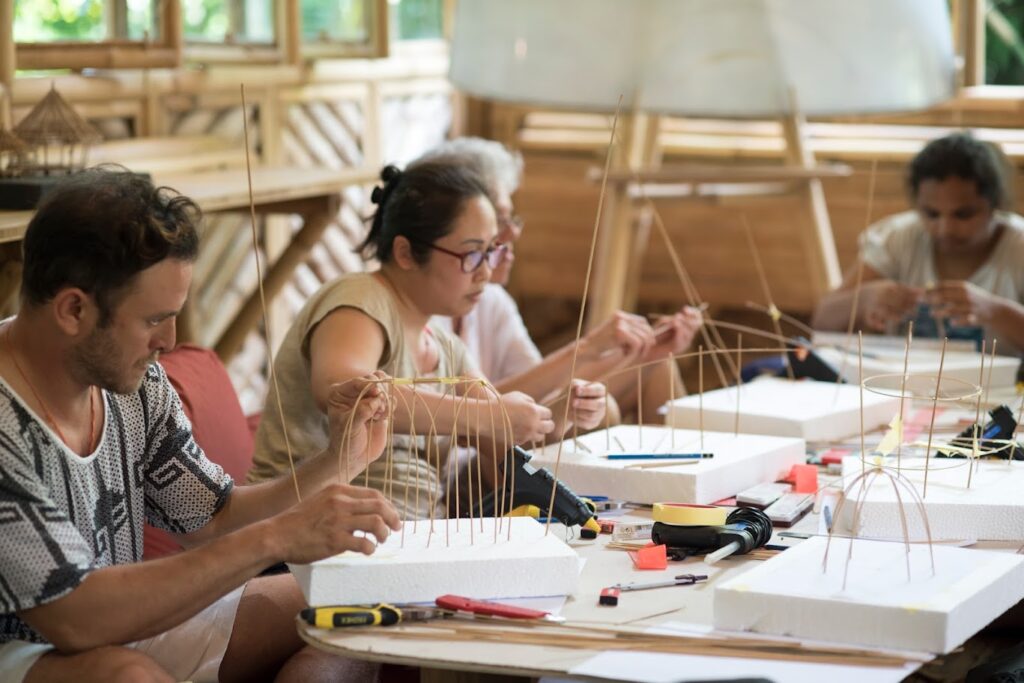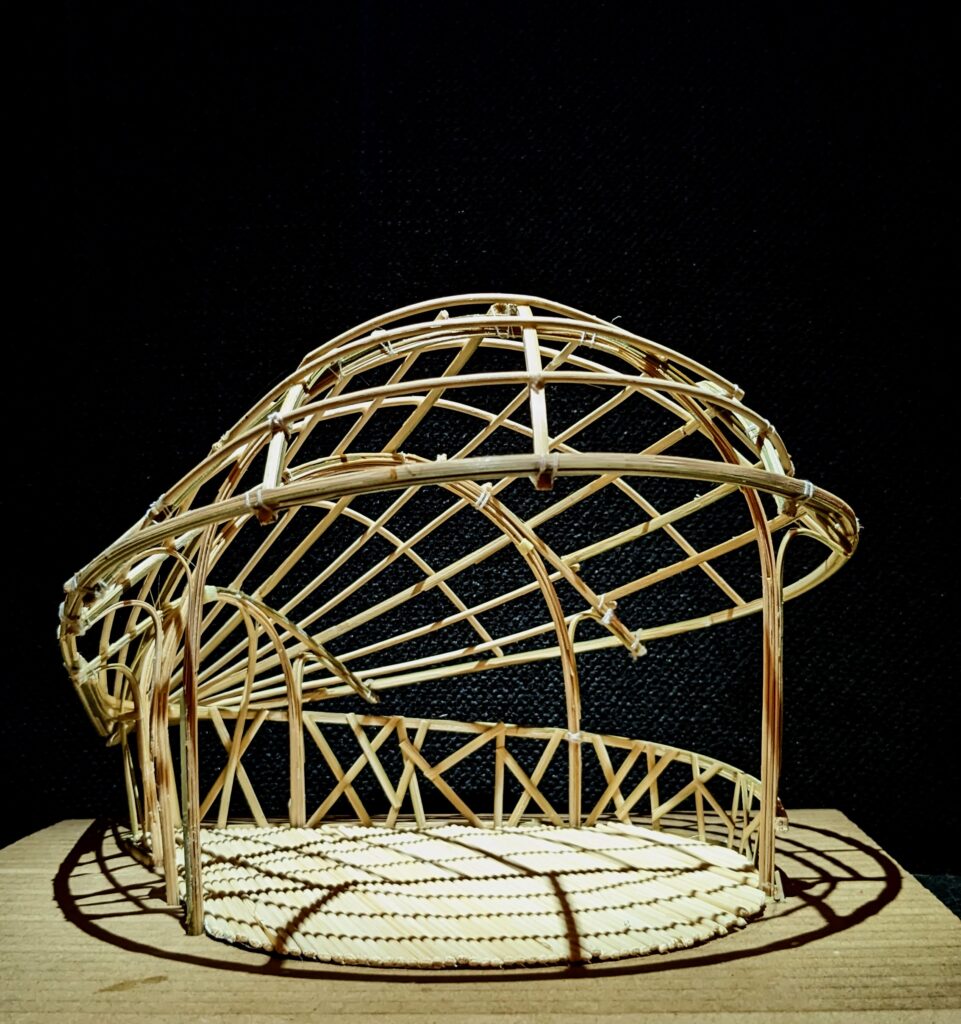Student Name: Annum Qureshi
Name of Project: Building a Bamboo Mosque in Pakistan
Course attending: The Bamboo Online Immersion: February, 2021
Country: Pakistan
Profession/ University: Architect
I am Annum Qureshi, an architect from Karachi, Pakistan and I have been working for the past 9 years, primarily on residential architecture and corporate interiors. I took a break last year to step back and explore new dimensions in architecture including alternate materials and building methods.
During this time I have become fascinated with bamboo and composite mud-bamboo architecture. I had been reading up on it for some time when I came across Bamboo U and registered for the online course. The Online Immersion imparted a holistic and practical understanding of bamboo right from planting, harvesting, and treatment methods to techniques employed in designing, engineering and construction. Bamboo U exposed me to a community of bamboo experts and enthusiasts from all around the world. The support from my instructors and the online bamboo community gave me the confidence to integrate the course project with a personal project in Karachi.
Bamboo building concept
I have been working on a community mosque, a total plot size of 60’ x 108’, in a low income neighborhood on the outskirts of Karachi, Pakistan. The larger context is a barren landscape with a view of unplastered brick houses till afar. There is no relief for the eyes. As a response to the larger context I have divided the plot activity into 3 layers, residing within each other and connecting one from the next.
- Breather as open space with relief; trees, shade and a water pump
- Connection as a layer of auxiliary functions
- Main prayer hall as an introverted space surrounded by gardens
These three together create a secondary context for the prayer hall which becomes a space for introversion and self-reflection. I plan to design the main prayer hall as a full bamboo structure.

I made three initial conceptual models exploring the different structural concepts introduced in Module 5, like the hyperbolic tower, anticlastic grid shells and arches. This had more to do with the excitement of exploring these structures and witnessing the sorcery of these structural systems first hand.
After completing Module 9 of the Online Immersion led by Elora Hardy of IBUKU, I continued to develop my concept, where the prayer hall has become a seed, a seed of faith and self-journey. The sprout that comes out vertically is actually the structure of the prayer hall. I translated this idea into sketches to further build upon the structural ideas I had iterated in Week 5.
I explored two conceptual models further, and finally worked on the option with the hyperbolic tower. I wanted to keep my first project simpler by achieving curves using straight poles rather than employing curving and bending. I used an elliptical base and top for the tower, and instead of a waist and a more vertical tower I made it like a mountain or volcano with an opening on the top that would serve structurally as the ring beam supporting the tower poles and aesthetically as an oculus. The self-stabilizing tower also provided a good option to support the roof coming from the ring beam to the eave. This was my first experience of how the model guides intuitively on structural stability.

Developing the final Structural Model
For the main structure I decided to incorporate 3 structural elements which we learnt during the Bamboo U Online Immersion, including a hyperbolic tower, a framed structure with columns to support rafters and a ring beam at the top of the hyperbolic tower to connect the rafters.
In my concept model I was using an elliptical base and a round top, this did not work in the model when I rotated the poles. Also, I was not sure how this would behave in tension. It made more sense to use an ellipse on the top as well.
I first worked out an ellipse and its joining pattern from the base to the top in a drawing. It was difficult to rotate the elliptical top ring beam and join poles, as one it distorted the shape of the ellipse and two it changed the orientation of the ellipse. So for the final structural model I adopted the method of the actual construction, suspending the top with temporary supports, marking the location of the poles coming from the bottom to the top ring beam and finally joining them.

On site in Karachi we have started with a temporary bamboo structure that was put up in Ramadan. We have been involved with the community, installed a water pump and worked on imparting the community with the ownership of the space. While we design, find the right materials, figure out construction details and funding, we are simultaneously working on getting the people involved with the space.
When I started this project I felt I knew nothing but when the model showed the strength of the structure, I gained some faith as well. The step by step design of this project is a learning curve, each step made me realize that it is doable. I can now see a seemingly complex bamboo structure and to some work figure out the various layers and components of design involved. I am grateful to Bamboo U for helping me understand bamboo construction as a step by step process.


Interested in joining an upcoming bamboo course? Have a look at our next Bamboo Online Immersion here.
If you’d like to get in touch with Annum about her project you can do so:
Instagram: @annum.qureshi

An architect from Karachi, Pakistan and have been working for the past 9 years, primarily on residential architecture and corporate interiors. Annum took a break last year to step back and explore new dimensions in architecture including alternate materials and building methods.
June 7-18, 2024
The 11 Day Bamboo Build & Design Course in Bali
In 11 days, we'll show you how to build bamboo structures we’ll share all that it takes to build with nature.
April 26, 2024
The Fundamentals of Building with Bamboo Online Course
All the fundamentals you need to get you started working with bamboo. Deep dive into cinematic videos and step-by-step guides that will provide you with a strong understanding of bamboo as a design and building material.

















